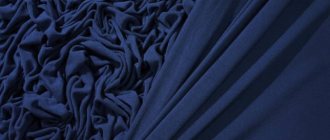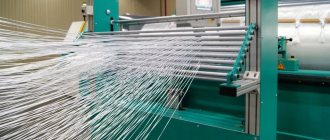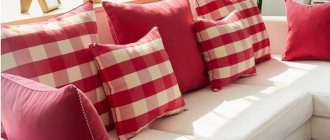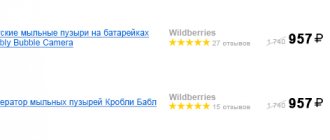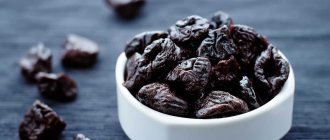What determines the choice of fabric for a skirt?
Choosing fabric is the most important step in preparing for sewing. In order not to miss, you need to understand what criteria influence this:
- the style of the skirt (this is the most important, because a product made from the wrong material will not hold the desired shape);
- time of year (for summer it is more appropriate to take lighter fabrics, and for winter, respectively, dense ones);
- purpose (for the office with heels, for a walk with sneakers, etc.).
Variety of different materials
Now a little more detail about each point.
When choosing a skirt style, it is important to take into account not only personal preferences, but also the specific features of your figure:
- the pencil skillfully emphasizes slender legs and subtle curves of the hips, looks bad on very narrow or, on the contrary, wide hips;
Pencil style
- The tulip is perfect for a figure with large breasts or broad shoulders and a narrow waist, because... visually it noticeably enlarges the hips, but at the same time it is not very suitable for tall girls because it shortens the legs;
- a wrap skirt, due to its interesting style, helps to hide imperfections in the form of a belly or extra folds, while the skirt should be as simple as possible, because you can get the opposite effect;
- The A-silhouette is almost universal, it enhances narrow hips, but at the same time hides wide ones, the only thing that needs to be taken into account is that it visually shortens the legs;
- a circle skirt emphasizes the waist as favorably as possible, but makes the hips massive;
- a year skirt can make wide hips easier, but is contraindicated for women with wide calves;
Godet style
- pleated lengthens and lightens the silhouette, but at the same time looks awkward on large sizes;
- a miniskirt is perfect for those who want their legs to look longer, but you should not overdo it if your initial characteristics are a curvy figure;
- with a peplum will help hide all the disadvantages of the hips, but when sewing it is important to take into account that on a curvaceous figure the peplum should be either higher or lower than the widest part of the hip;
- a straight skirt is suitable for everyone, it elongates the figure well, but you need to take into account that styles to the knee and below visually reduce your height;
Straight style
- a multi-layer skirt is suitable only for small, thin girls, in other cases it looks very unfortunate;
- a full-length skirt can hide all the imperfections of the legs, but at the same time reduces height.
At the peak of popularity now are straight skirts, pencil, a-line, wraparound, flared, with a front slit, pleated and asymmetrical.
Important! It is the fabric that can emphasize a good cut and impeccable fit. Ineptly selected material can quickly ruin everything.
Based on the time of year as a whole, all the nuances are obvious - for the summer, light flowing fabrics (ideally chiffon or natural cotton), the body should breathe and feel comfortable. In winter, it is best to choose natural wool, boucle or tweed; firstly, such a skirt will keep its shape well, and secondly, it will keep warm well.
Cotton version
If the skirt is supposed to be worn exclusively to the office, then it should not wrinkle in order to always look perfect. Accordingly, this effect can be achieved by adding synthetic fibers.
What fabric are skirts made from?
Absolutely all fabrics are held in high esteem - both natural and with an admixture of synthetics and completely synthetic ones. The most popular fabrics from which skirts are made:
- Natural cotton. This material is almost universal. Thin fabrics are ideal for summer, and thick ones for the cold season. Cotton products breathe well and do not cause discomfort to wear.
- Linen. A material that has long been considered noble. Its ability to allow air to pass through gives the body maximum comfort.
Linen skirt
- Velvet. It is most often used to make holiday clothing because of its specific appearance, but recently stylists have been skillfully incorporating it into everyday looks.
- Jeans. Due to its structure, it successfully emphasizes the figure and hides imperfections. It is because of this that girls with curvaceous figures prefer him. Denim is a universal fabric for both summer and winter.
- Silk. This material is found equally both natural and artificial. Skirts made from it look very festive, and the choice of colors is almost limitless.
What fabric to choose for a semi-sun skirt for the summer
A summer skirt, by definition, should be light, made from natural or artificial material, similar in quality to natural material. The lightest are skirts made of natural silk. The only thing that can overshadow a summer walk in a beautiful, lush outfit is the wind, which raises the hem almost to waist level. Based on this, when thinking about what fabric to choose for a semi-sun skirt, you should take care of purchasing lining fabric. A fine mesh made of artificial fibers would be ideal. For a summer suit, slender girls can use a light semi-sun skirt with a multi-layer chiffon lining. It will resemble a bell if a thin wire is passed along the edge of the petticoats while overcasting the fabric. The half-sun will appear airy, the petticoat will keep the subsequent ones from clinging to the legs. It’s both beautiful in appearance and not hot, despite the large layer of synthetic fabric. The same technique is used for sewing ballroom suits with sun and half-sun skirts. What fabric to choose for the sun skirt when sewing concert costumes, it is necessary to take into account the historical traditions of the dance of the people who will represent the group.
- When choosing material for ballroom dancing, chiffon and natural silk are used.
- Spanish dances require burgundy or scarlet thick, smooth cotton material and black lace to make the lower flounce.
- Gypsy dances are usually performed in fluffy cotton skirts with colorful colors.
- Russian costumes for holding folk festivals on the street involve making costumes from woolen fabrics.
Considering the specificity of the hem, which can develop when the body is turned, petticoats are needed for both light and heavy fabrics. If light summer materials should be bright and shiny, then fine high-quality suiting wool is used for sewing woolen fabrics. The denser the material, the less the edges of the cuts will “crumble,” but they need to be overcast even if the seam is closed.
Fabrics for pencil skirts
The name for the product “pencil” has always been considered a basic model in the wardrobe. Absolutely any fabric is perfect for it. Most often, of course, costume ones are used. Such a skirt must keep its shape and not wrinkle, so it is better not to use 100% natural fabric.
The following compositions work well:
- Wool + elastane.
- Wool + lavsan + elastane.
- Wool + viscose + elastane.
For the warm season, linen, knitwear or jeans are good. In cold weather - tweed, drape, corduroy complemented by lining.
Wool + elastane
The fabric for a straight skirt is no different from the choice for a pencil skirt. There can be literally any options, the main thing is to choose wisely for the season. It would be nice if the composition contains stretch.
What fabric to make a sun skirt from
In fact, the circle skirt is a full-fledged circular style, the diagram is a circle with a hole in the middle. Due to this, she looks lush. It requires a large amount of fabric. If you choose a dense one, the product will seem heavy. Therefore, for this style it is recommended to take thin, weightless materials. They look nice and easy. If you still need to sew from thick fabric, then it is better to take a shorter length of the product itself, so as not to create unnecessary weight.
Chiffon skirt "sun"
“Sun” made of thin fabric, for example, chiffon, looks very beautiful due to its impressively falling folds and does not hold volume. But in strong winds it does not hold up and can rise too high. Thick fabric, even without movement, looks fluffy, but confidently holds its shape.
For such a product, thin silk or cotton fabric is ideal, which will fall beautifully, or suit fabric, but not very dense, but loose, so that folds form.
Cutting the product
The style is considered one of the simplest.
Even a novice craftswoman can cut out a flared skirt.
To work you will need:
- cutting table;
- sharp scissors;
- tape measure;
- chalk;
- pins;
- a round object with a diameter equal to the waist circumference + 3 cm (for example, a plate of a suitable size).
Having prepared everything you need, you can proceed to patterning a flared skirt with your own hands:
- Fold the fabric in half with the wrong side facing out and secure with pins.
- From the fold angle, measure the length of the future product + 10 cm (allowance for hem at the bottom).
- From this point, set the outline of the upper cut. To do this, apply and outline the selected circle (the fold should pass through the middle of the circle).
- Using a centimeter tape, measure several segments from the contour of the upper cut equal to the length of the product + 10 cm and set control points and connect them. The result will be the outline of the lower cut.
- It is necessary to set aside 1 cm sections from the contour of the upper cut and connect them - this is the allowance for sewing on the belt.
- Trim off excess fabric. First, this is done along the lower contour of the cut, then along the upper one. If you are planning a skirt with a zipper, then on one side along the fold you should cut the fabric along the entire length - this will be the back seam.
- From the remaining fabric you need to cut a belt. It is a rectangle. Its length should correspond to the waist circumference + 3 cm (seam allowance), and its width should be arbitrary, multiplied by 2 + 2 cm (seam allowance).
Fabric for a summer skirt
Summer skirts have more expanse than all others. For the summer, you can take both budget polyester and more expensive cotton, linen, etc. Here it is important to determine how important such fabric properties are, such as wear resistance, shrinkage, and shape.
Of course, any natural fabrics (cotton, linen, silk) are always better, because... the body breathes, does not sweat, does not exhibit allergic reactions, etc. However, they have one significant drawback - they wrinkle and shrink after washing. For summer, from successful and more or less universal options, you can choose cambric or viscose. They are not so prone to wrinkles, but are very comfortable. In extreme heat they can slightly cool the body.
Easy option
In summer fabrics, as in any other case, it is necessary to take into account the style of the product. For straight and pencil skirts, linen, denim, cotton or silk are suitable. For the recently fashionable pleated skirts, it is better to take flowing fabrics - chiffon or silk. For most models, wet silk, cotton and viscose are suitable.
For summer, light translucent fabrics are often used, but products made from them are usually multi-layered (for example, this form of skirt may be called a “tutu”). Sometimes they even take lace or knitted fabric and add a lining underneath.
Almost any skirt fabric is suitable for sewing summer items. The most important thing is to consider what the end result should look like.
Popular types of fabrics by density and thickness
When choosing a fabric for a skirt, you can see many different characteristics on its label. Among them, the surface density of the material can be noted. This parameter will tell you how wear-resistant the fabric is - the higher the value, the longer a skirt made of this material will last.
The thickness of the fabric may also be indicated on the label. This characteristic is influenced by yarn density, type of fiber weave, fabric finishing and other nuances. The thicker the fabric, the higher its strength, heat protection and wear resistance.
Winter and demi-season skirt models are made from thicker materials. These include thick wool, corduroy, and thick knitwear. For summer skirts, less thick fabrics are used, for example, chiffon, cambric, crepe de Chine, thin linen.
How to choose fabric
From the article it is clear that the choice of fabrics for sewing skirts is insanely large. However, for beginners it is better to sew from silk, denim, gabardine - these materials are not picky and fit very well. Velvet, chiffon, and satin may seem difficult. In addition, you should not take fabrics from
Fabric with complex prints
The types of fabrics for skirts are delightful in their abundance, they are limitless - they can be absolutely any and with any composition. The main thing to consider when selecting is that the resulting product should effectively emphasize advantages, hide flaws and correspond to the season of wear. Knowing what fabric you can use to make the skirt you need, you can significantly reduce your search time. Not every sewing school gives such a detailed description.


